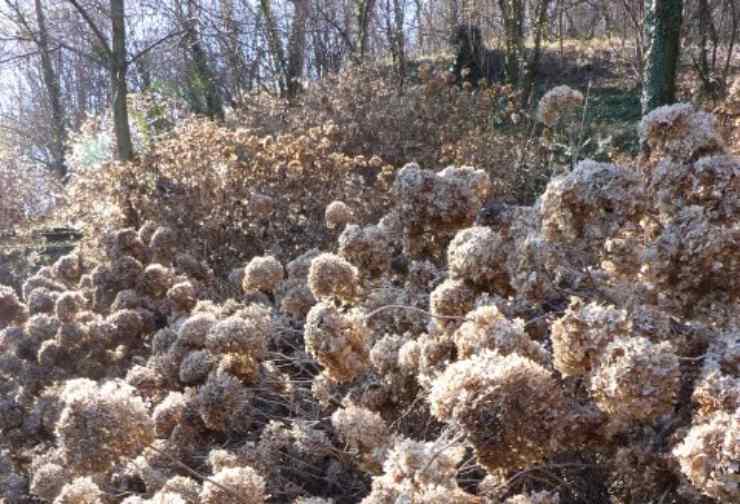
Hydrangeas are beautiful flowers, but if not cared for properly, they can dry out. Here’s how to restore them and always have them perfect.

Hydrangeas are a plant of Asian origin that is very easy to grow and embellishes gardens but also balconies with little space . They are very adaptable, strong and generous plants. They love the shade, but also live well in the sun. The scientific name of hydrangea is Hydrangea and it belongs to the Hydrangeaceae family. The latter is a family of plants that belongs to the order Cornales and is widespread in Asia and North America as well as in southeastern Europe.
It has clusters of flowers and its colors are very bright, ranging from white to blue, but also from pink to purple, all depending on the type of soil in which they grow. If the soil is rich in iron, its color tends to be purple or blue, while if it is poor in iron it tends to be pink or white.

According to legend, the name was given to it by an explorer. This is Philibert Commerson, who dedicated this plant to his lover, who led an expedition with him disguised as a man.
In the past, hydrangeas were given as gifts to reveal a love that had just broken out or had returned. And the message changed depending on the color of the flower:
– white: blooming love;
– blue: capricious lover for whom you have strong feelings;
– Pink: unique love.
The secret to keeping hydrangeas from drying out
Hydrangeas are truly beautiful flowers and when cared for they add a really beautiful look to the garden. They bring joy and remind us of abundance with their bushes full of green leaves and colorful flowers. Hydrangeas can be planted both in small pots and in the ground. Its name appears to come from Greek and means water vessel.
The place where it is kept, i.e. whether it is in a pot or in the ground, does not matter, but what is important is that it is not in a very sunny place. Therefore, the first precaution is exposure to the sun. Hydrangeas don’t particularly like the sun and prefer semi-shady locations. It also loves to be watered abundantly, especially in summer.

In fact , in summer the soil tends to dry out very quickly, which is why the hydrangea is affected and runs the risk of drying out. Therefore, it is important not to get to this point, but if it is too late, you can revive your dried hydrangea with a few useful suggestions.
If both the leaves and the flowers are dry, you must first remove the damaged part by cutting off everything that is dry. As a result, the hydrangea regains its strength and can then recover. You can save the branches that are still green to have new hydrangea plants.
Hydrangeas do not die so quickly and it is important that the roots do not dry out. If these are still alive, the hydrangea can bloom again. However, if the dry hydrangea plant is in a vase, the entire vase must first be submerged in a container filled with water.
You need to leave the container until bubbles stop forming, as the plant will then absorb the water it needs. This will make the earth moist and allow it to recover.

The same applies if the hydrangea is in the garden. In this case, water heavily to ensure that the water penetrates deep into the roots. Caring for hydrangeas is not very difficult and does not require much knowledge . But not much of a green thumb either. All it takes is attention and passion.
